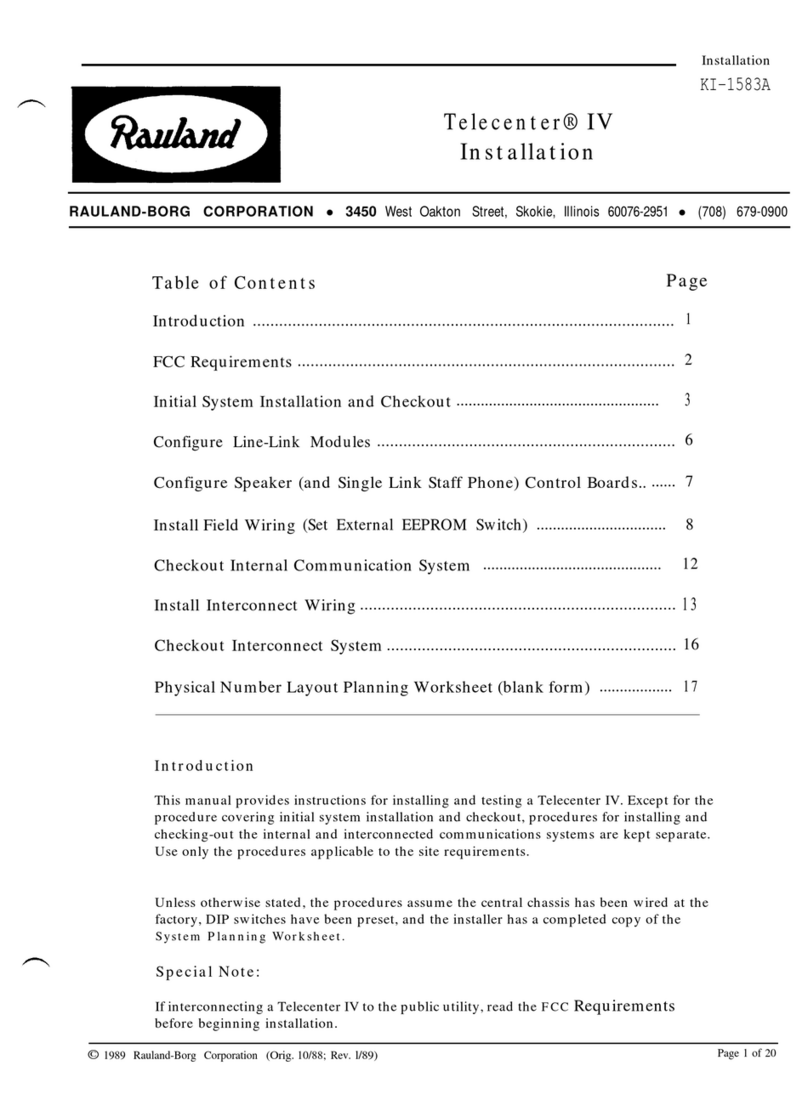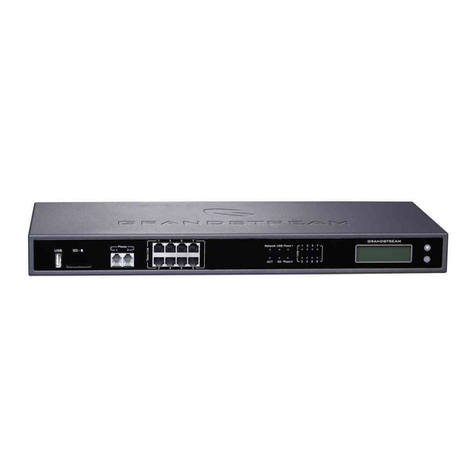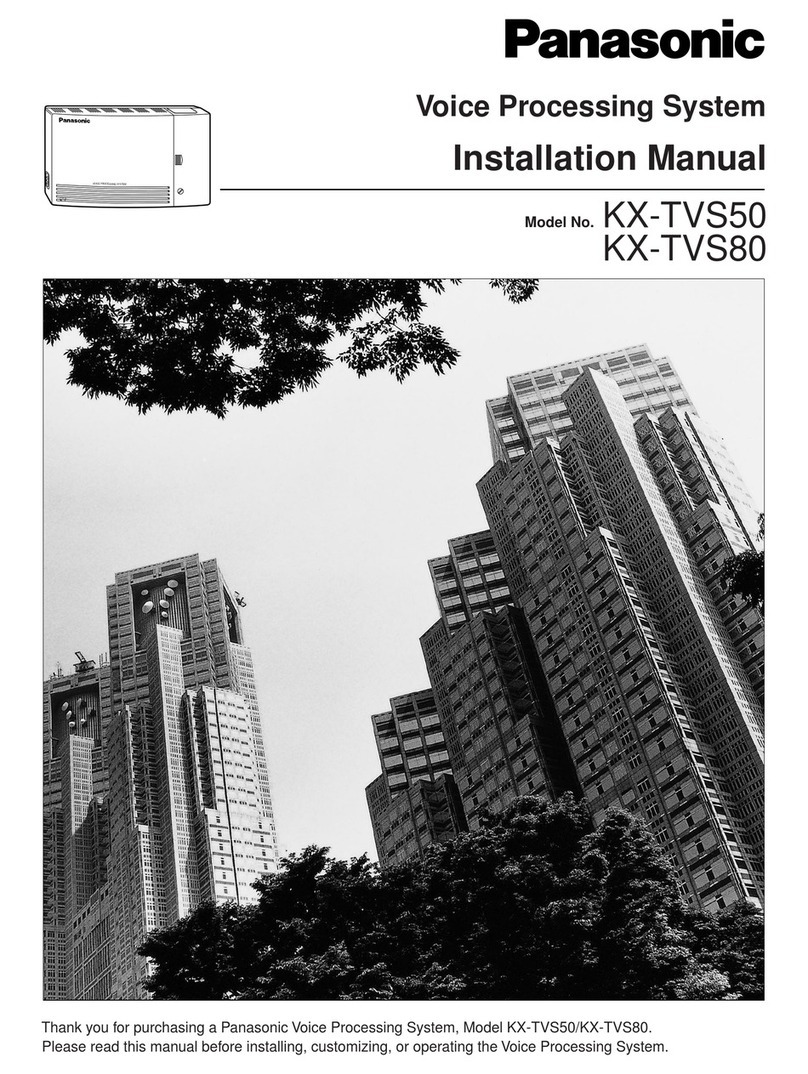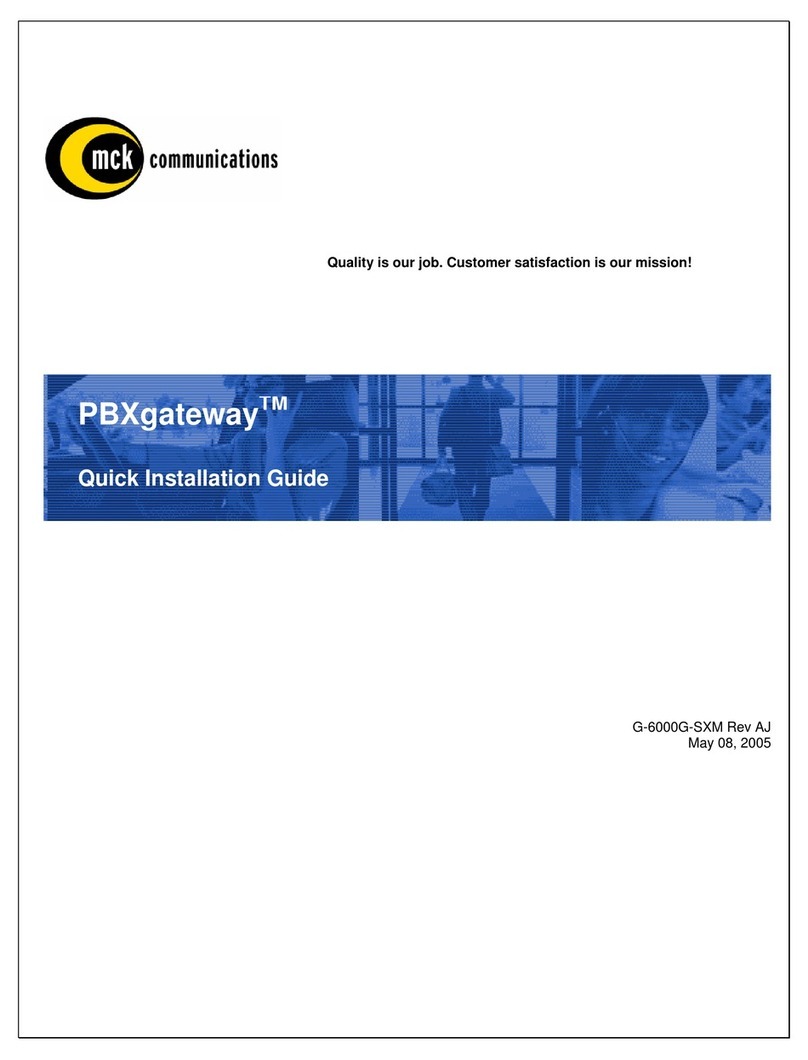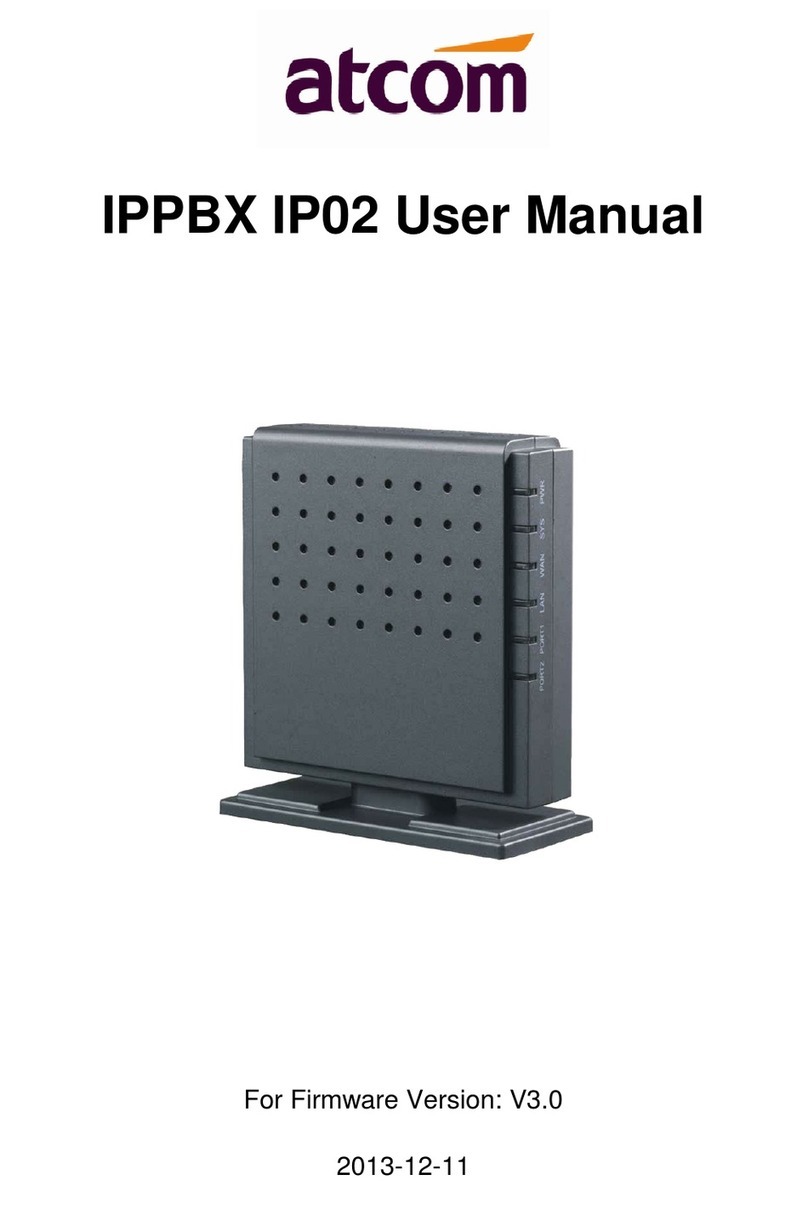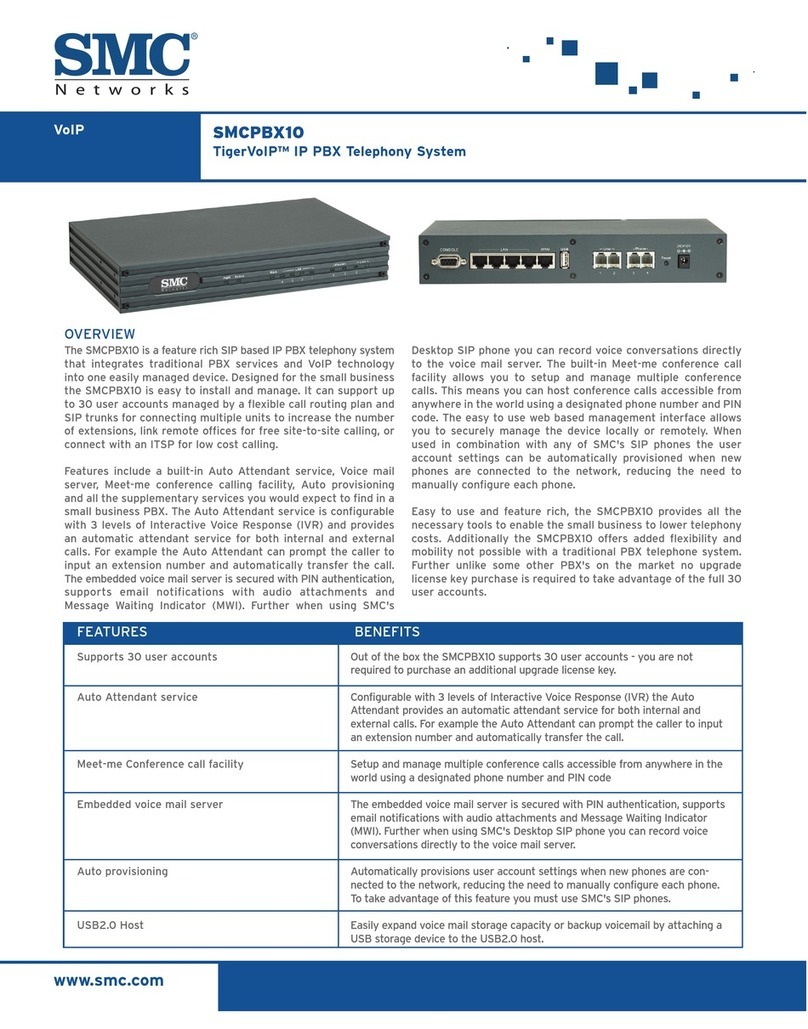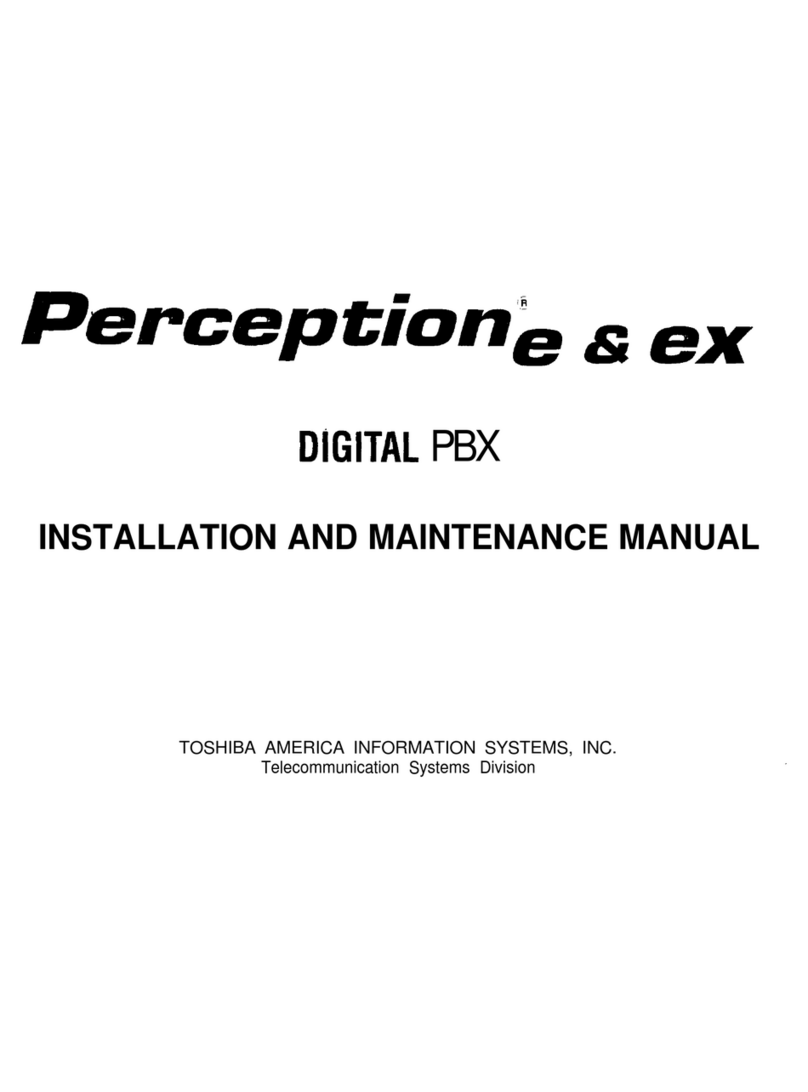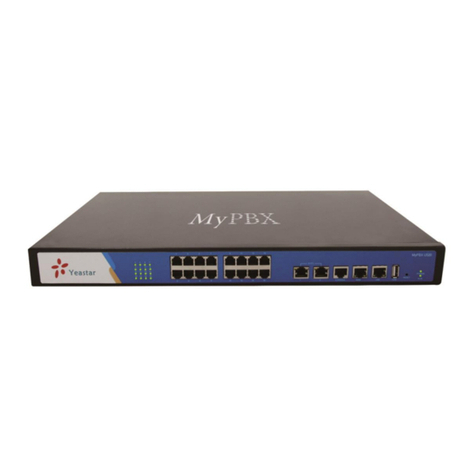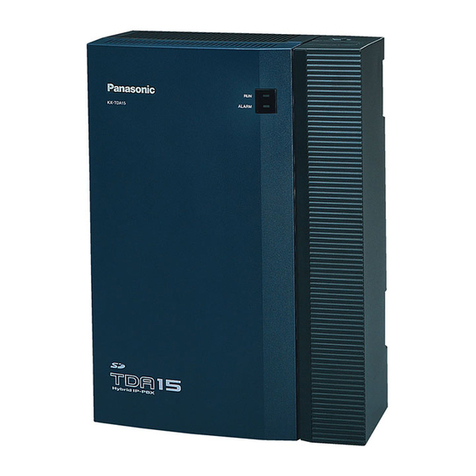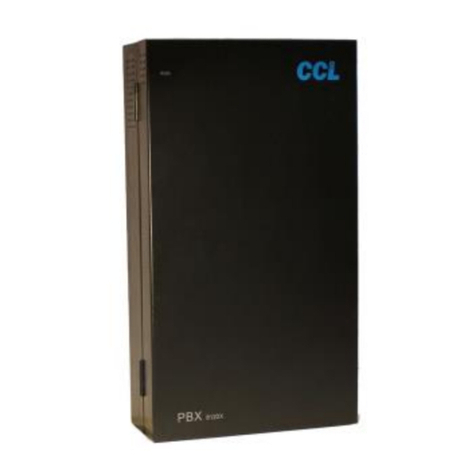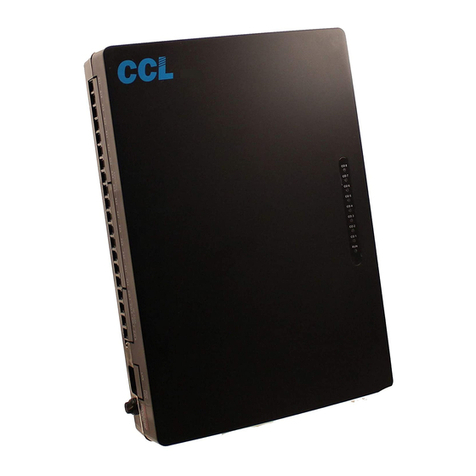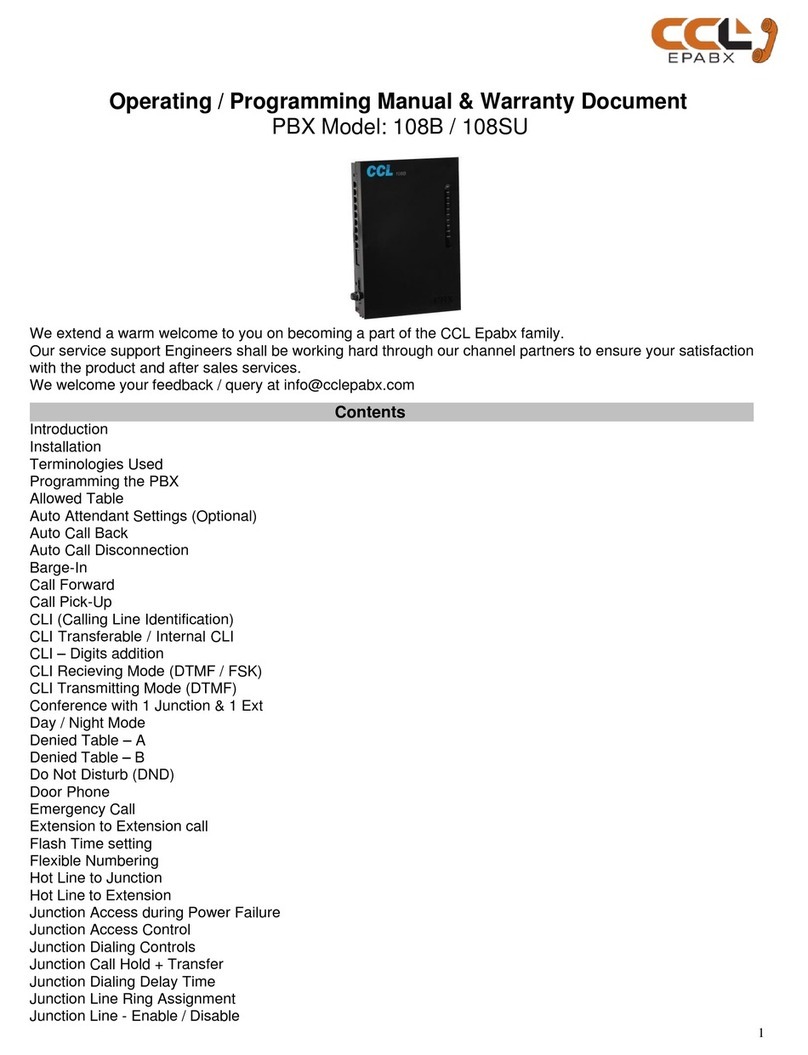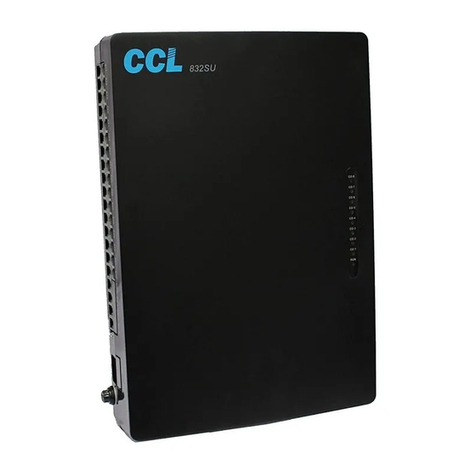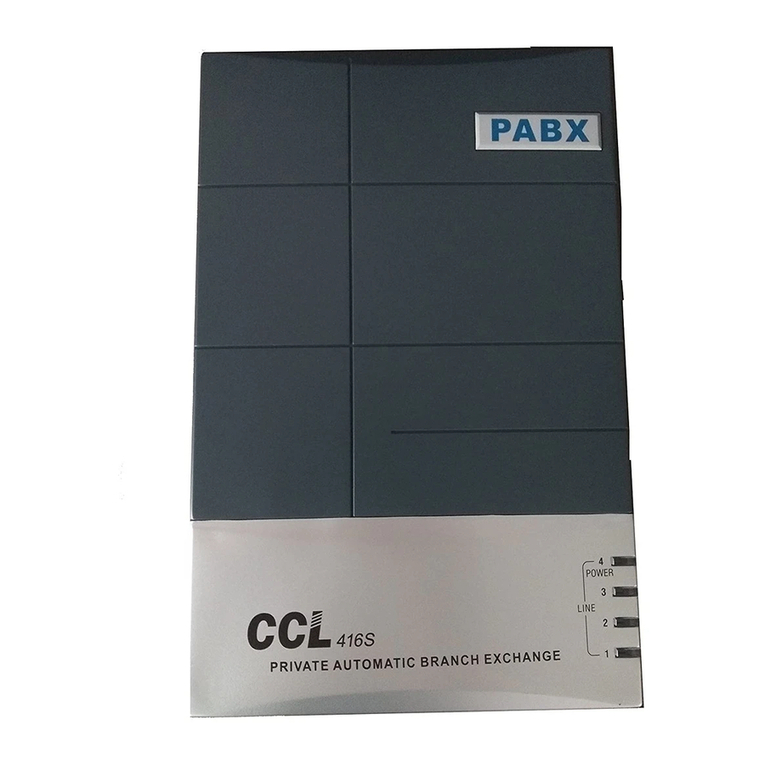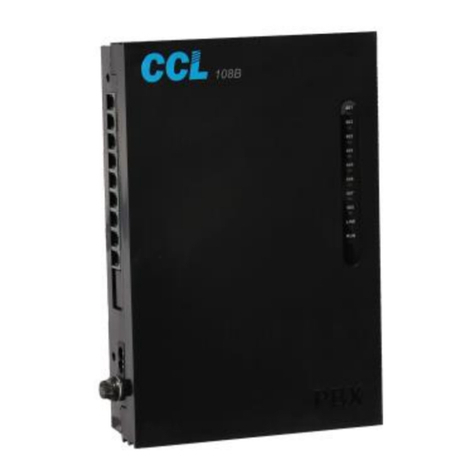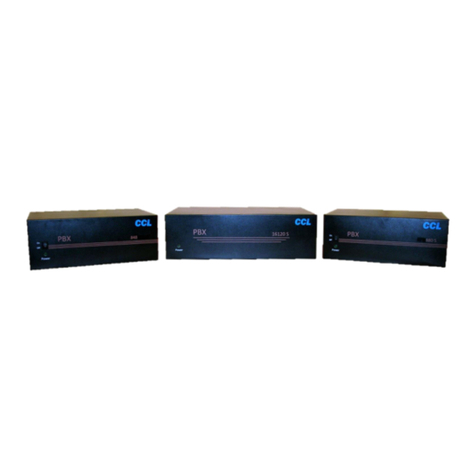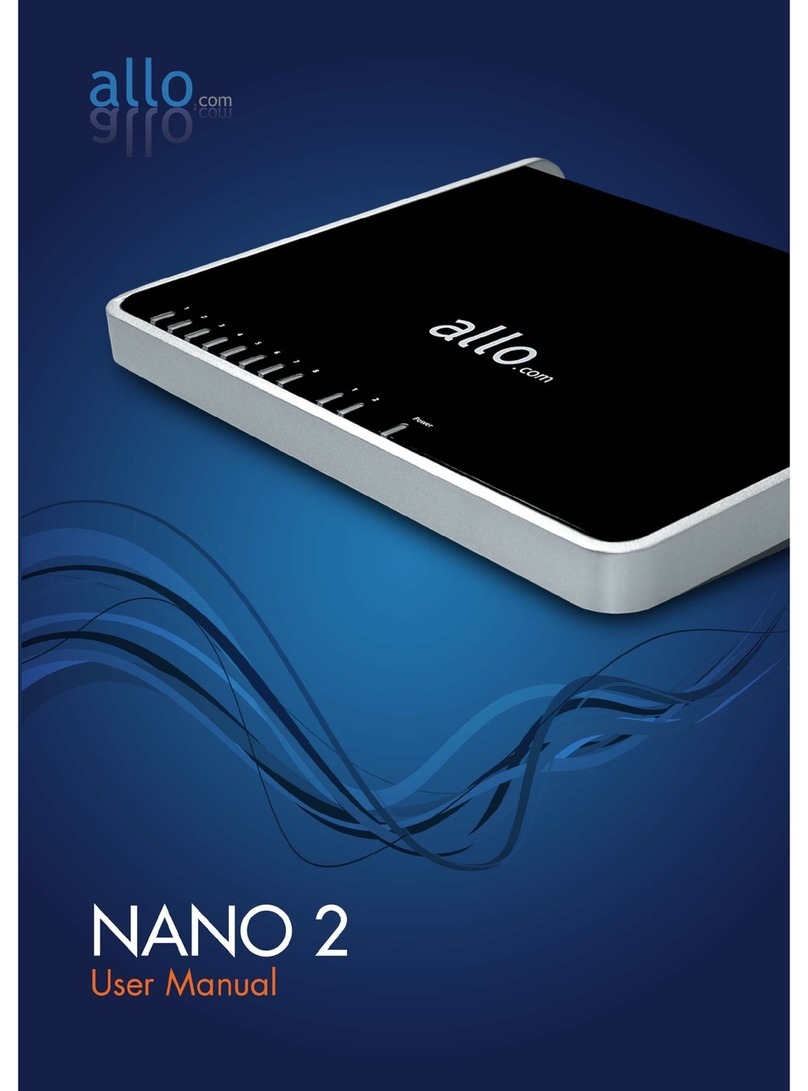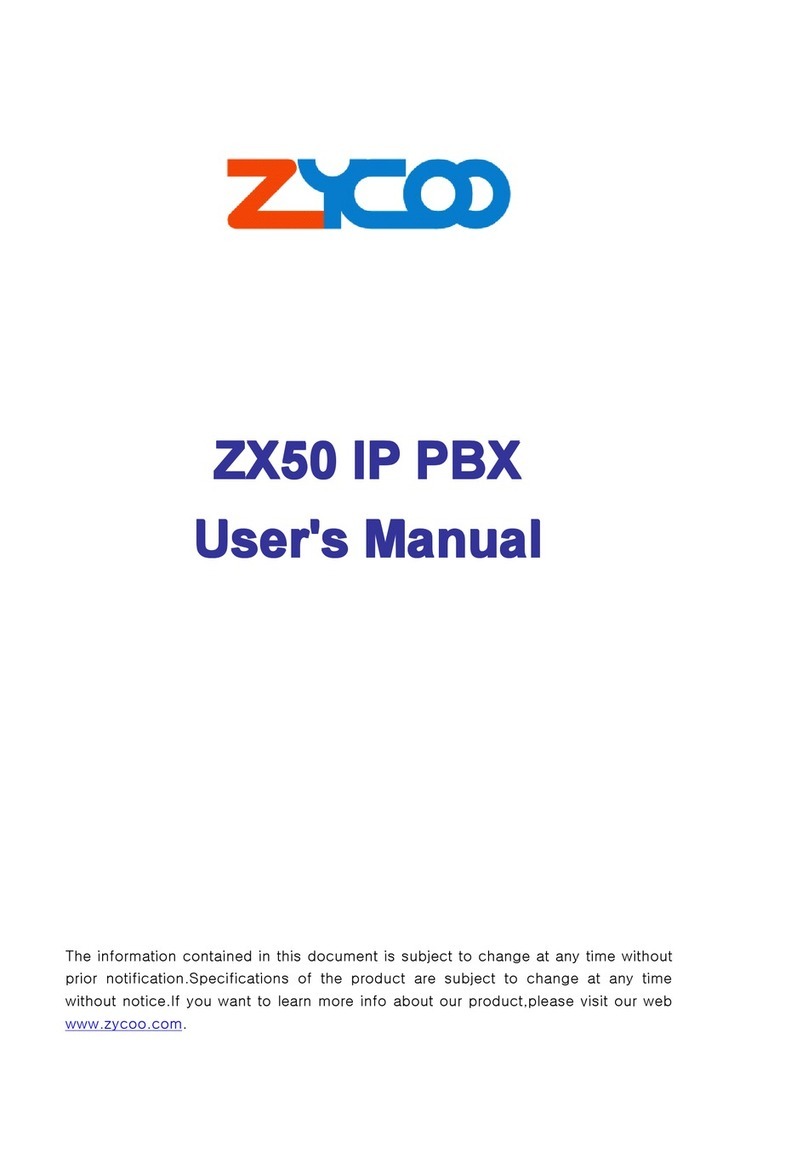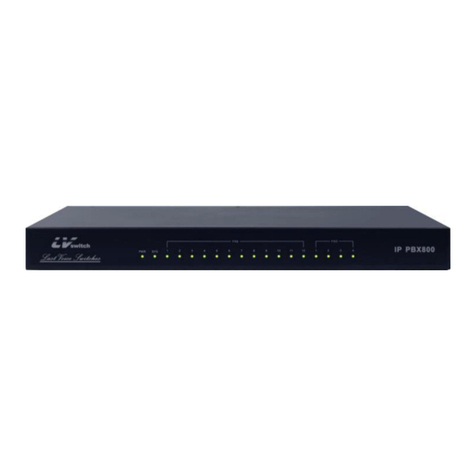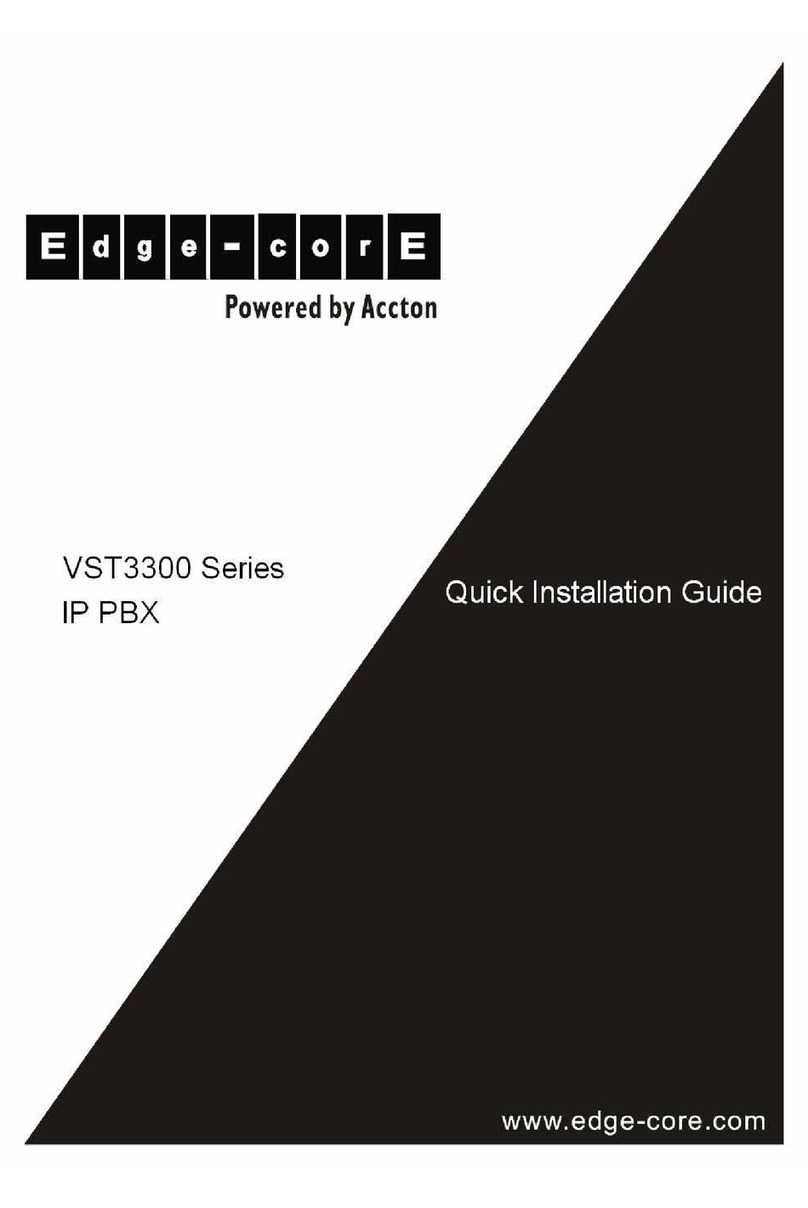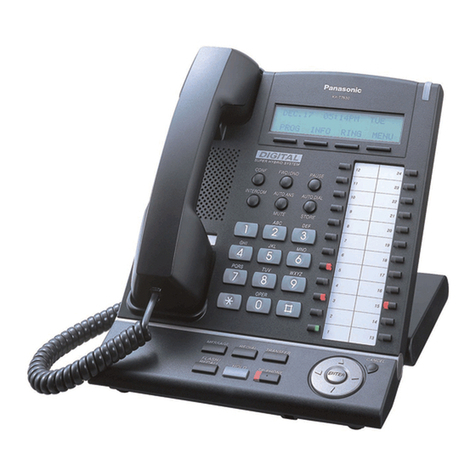In case of dialing out on the Junction Lines, PBX can be configured to work in either of the following 2
modes: Mode Description
Circular When an extension dials 0, the PBX will allot Junction numbers 01.
Next time any Extension dial 0, Junction number 02 will be allotted. Then 03. Then 01.
Sequential When an extension dials 0, the PBX will allot Junction numbers 01.
Next time any Extension dial 0 and if Junction 01 is free then Junction 01 will be allotted.
Junction number 02 will be allotted only when Junction 01 is engaged.
Programming: To program in Circular mode, Dial #* 0000 + 0620 #
To program in Sequential mode, Dial #* 0000 + 0621 #
Every Extension can be programmed to access Junction Line.
The access to each Extension can be different in Day mode and Night
mode. Procedure:
Dial #* 0000 + 70 J NN X # (For Day Mode
access) Dial #* 0000 + 71 J NN X # (For Night
Mode access)
where J = Junction Number (1 to 3)
NN = Last two digits of Original Extension Number (01 to
12) X = 0 to allow Junction access
1 to Disallow Junction
access.
Dial #* 0000 + 70 J X # (To allow/disallow all extensions to access Junction in Day
Mode) Dial #* 0000 + 71 J X # (To allow/disallow all extensions to access Junction in
Night Mode)
Default: All extensions are allowed to access Junction Line in both Day and Night mode.
Junction dialing facility can be controlled Extension wise as below:
Dial #* 0000 + 40 NN L #
where, NN= Last two digits of Extension number.
L = 0 - The Extension can dial only the numbers starting with digits defined in “Allowed Table”
1
- The Extension can dial all numbers.
2
- The Extension can dial all numbers except for ISD numbers.
3
- The Extension can dial all numbers except for STD numbers.
4
- The Extension can dial all numbers except for the numbers starting with digits defined in “Denied
Table-A”
5
- The Extension can dial all numbers except for the numbers starting with digits defined in “Denied
Table-B”
6
- The Extension cannot dial out but can make internal calls.
To give all extensions the same L value: Dial #*0000 + 40 L
# Note: In default: all extensions are in L = 1 mode.
.
To transfer a Junction line to another extension, FLASH and dial the Extension number while talking on the junction line.
Now there can be following 4 conditions:
1. When called extension lifts, calling extension can converse and then keep the Handset down. The Junction call
will then get transferred.
2.
Called extension lifts but doesn’t want to talk then he may keep the Handset down.
The call will come back to the transferring extension.
3. The called extension is ringing but not lifting the Handset. Keep the Handset down.
The call will ring on the called extension for 25 secs and if not answered it will ring back on the transferring
extension. Now if the Transferring extension is busy, the Junction call will keep waiting for the Transferring
extension to get free.
4.
If the called Extension is engaged, the user will hear 2 tones. Now FLASH to get back to the Junction line. If FLASH
is not done within 10 secs, the Junction line will get connected. This is the default setting in the PBX.
Alternately the user can change to the following mode:
On dialing an engaged extension user would get engaged tone. During the engaged tone user can FLASH and
get connected to the Junction line.
Programming: Dial #* 0000 + 831 #
To shift back to the default setting: Dial #* 0000 + 830 #
